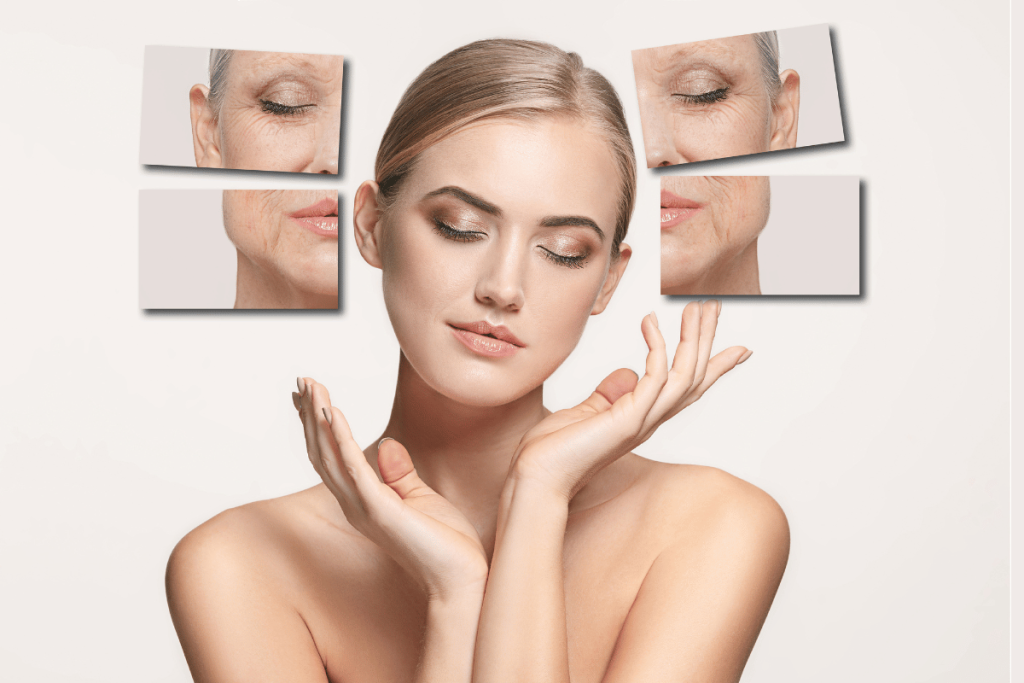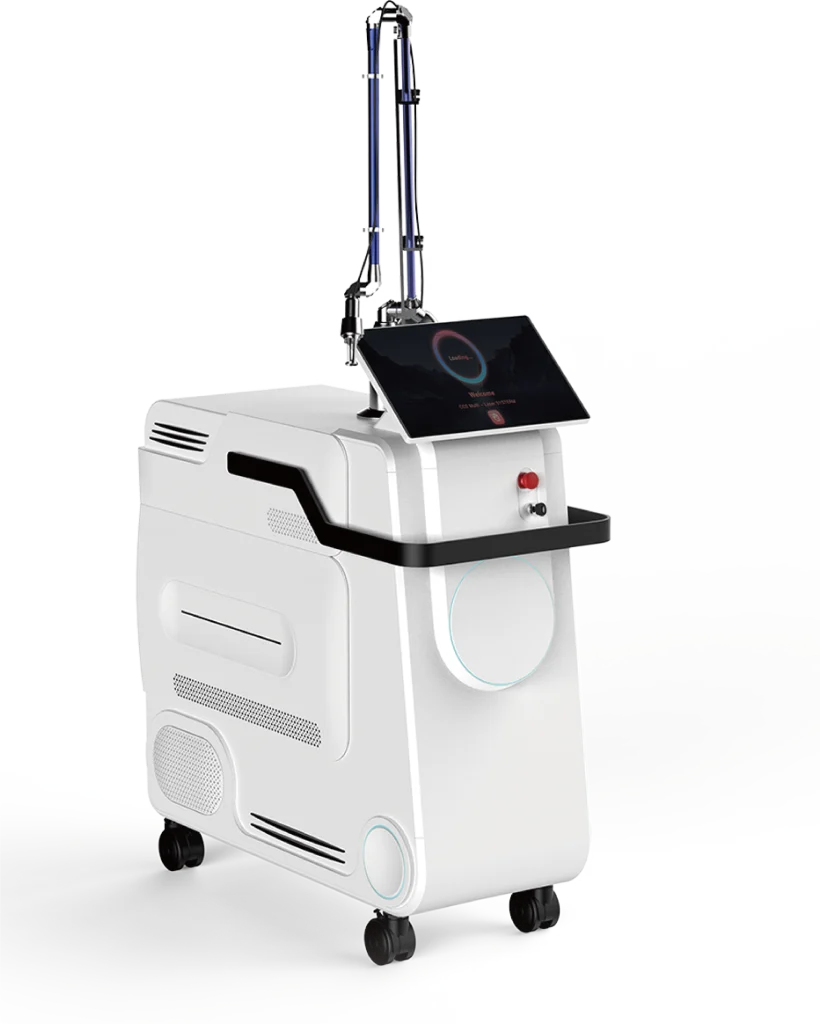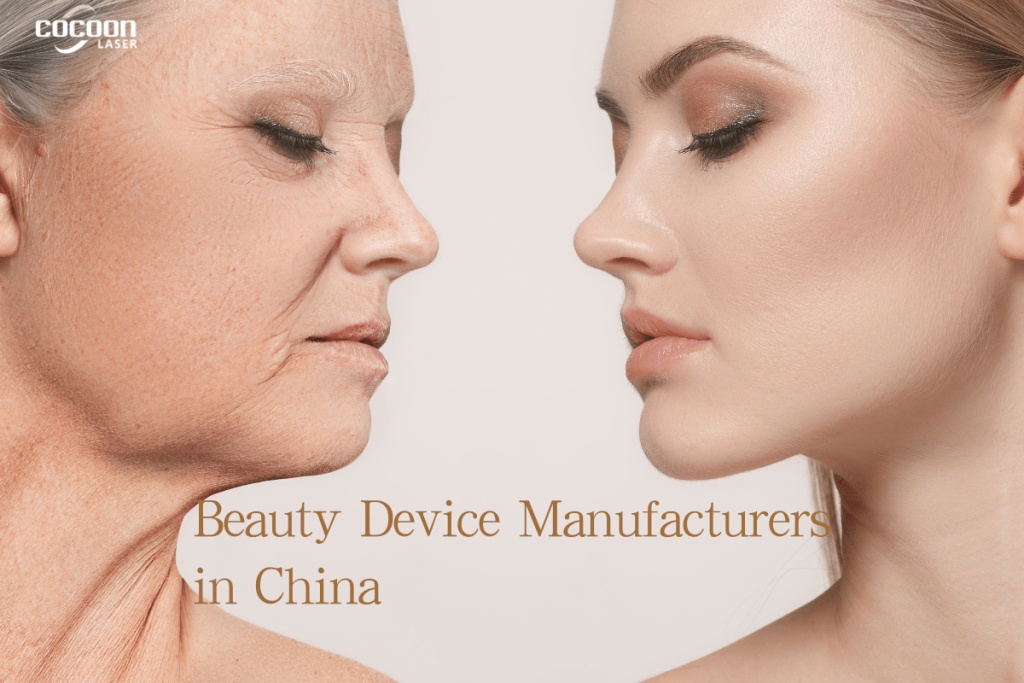Why Is My Skin Dull and How Can I Fix It Naturally?
If you’ve ever opened your front camera and thought, “Why is my skin so dull?”—you’re not alone. “Skin dull” is one of the most common search phrases in beauty and dermatology, and it usually describes skin that looks tired, flat, greyish, or rough, even when you’re not technically “breaking out.”
The good news: dull skin is rarely permanent. In most cases, it’s the result of dehydration, dead skin build-up, UV damage, pollution and lifestyle habits—all of which can be improved with the right routine and, when needed, professional treatments.
This article will walk through:
- What actually causes skin to look dull
- How to fix dull skin naturally with daily habits
- When it makes sense to consider advanced treatments like fractional CO₂ lasers
- How a device such as COCOON CO2 4D can fit into a professional treatment strategy

What does “dull skin” actually mean?
Dermatology clinics often describe dull skin as a combination of:
- Loss of radiance – skin doesn’t reflect light evenly
- Uneven texture – fine flakes, rough patches, enlarged pores
- Uneven tone – mild blotchiness, leftover spots, sun damage
- Lack of plumpness – skin looks “flat” rather than bouncy
Healthline notes that dull skin is often caused by dehydration, lifestyle factors, or cutting corners with skincare, and that improving moisture, exfoliation and active ingredients can restore glow.

Why is my skin dull? The main causes
1. Dehydration and a weakened skin barrier
When the skin is short on water, it loses plumpness and looks less luminous. A dermatology-focused guide explains that dryness and dehydration make fine lines more visible and scatter light irregularly, which makes the complexion look tired.
Skipping moisturiser is a common mistake—one Singapore dermatologist specifically warns that not using a moisturiser can lead to dry, dull skin and accelerate the appearance of fine lines.
2. Build-up of dead skin cells
Skin constantly renews itself, but when dead cells build up on the surface, they act like a “dusty film,” scattering light instead of reflecting it. A skincare article on common causes of dull skin points out that not exfoliating enough is a major culprit; regular exfoliation helps uncover softer, brighter skin and allows products to penetrate better.
As we age, cell turnover naturally slows, so this build-up becomes more obvious.
3. Sun exposure and environmental damage
UV radiation is a key driver of photoaging—damaging collagen, elastin and pigment-regulating cells. Over time this leads to:
- Uneven tone and sun spots
- Fine lines and rough texture
- Overall “weathered” or dull skin
Multiple dermatology sources link UV exposure to dullness and loss of radiance through collagen breakdown and oxidative stress. Pollution and cigarette smoke add further oxidative damage, which can dull the complexion and disrupt the skin barrier.
4. Lifestyle: sleep, stress, diet
A Seattle dermatology clinic notes that lack of sleep, chronic stress, dehydration and a poor diet are all common triggers for dull skin.
- Sleep – skin does much of its repair work at night. When sleep is cut short, cell renewal slows and the face looks sallow.
- Stress – high cortisol can dehydrate the skin and increase inflammation, blunting its glow.
- Diet – diets low in antioxidants and high in processed foods and sugar are linked to sluggish cell turnover and increased oxidative damage, both of which contribute to a dull, uneven complexion.
5. Natural ageing
Intrinsic ageing means that with time, we produce less collagen, elastin and natural oils. The skin becomes thinner, drier and less reflective, and expression lines remain as fine etched wrinkles. Dermatology resources emphasise that this natural decline plus sun exposure together are the main long-term drivers behind tired-looking, dull skin.

How can I fix dull skin naturally?
If you’re searching “Skin Dull” and want realistic, natural ways to improve it, think in terms of small habits that you do every day. These don’t require a clinic visit, but they do require consistency.
1. Reset the basics: cleanse gently, not aggressively
Over-cleansing or using harsh foaming washes can strip lipids and damage the barrier, making skin more dehydrated and dull. A gentle, pH-balanced cleanser used morning and night is usually enough for most people, with double cleansing reserved for heavy makeup or sunscreen days.
2. Commit to daily sun protection
If there is one “non-negotiable” step for brighter skin, it’s sunscreen. Photoaging from UV is cumulative and directly linked to dullness, pigmentation and texture changes.
Try to:
- Use a broad-spectrum SPF 30+ every morning
- Reapply with outdoor exposure
- Combine with physical protection like hats and sunglasses
Preventing new damage is far easier than trying to erase it later.
3. Add controlled exfoliation
Because dead skin build-up is a major cause of dullness, gentle, regular exfoliation can make a noticeable difference.
Options include:
- Chemical exfoliants like AHAs (lactic, glycolic) or BHAs (salicylic acid) a few times per week
- Very gentle physical exfoliation (soft cloth or non-abrasive scrub), used sparingly
Dermatology and skincare resources emphasise that over-exfoliating can backfire, damaging the barrier and causing more redness and dullness, so the key is controlled, not aggressive, exfoliation.
4. Rebuild hydration and barrier function
To improve “skin dull” from dehydration, you need both water and a functioning lipid barrier.
Look for:
- Humectants: hyaluronic acid, glycerin, panthenol
- Barrier-supporting lipids: ceramides, cholesterol, fatty acids
- Soothing ingredients: aloe, centella, oat extract
Dermatologists frequently recommend moisturisers with humectants plus emollients to keep skin plump and prevent flaking, which instantly helps light reflect more evenly.
5. Use proven brightening and renewal ingredients
If your skin tolerates them, certain actives have good evidence for improving dullness:
- Vitamin C – an antioxidant that supports collagen and helps brighten pigmentation, commonly recommended for dull, sun-damaged skin.
- Retinoids (retinol, retinal, prescription retinoids) – increase cell turnover, improve fine lines and texture, and can gradually refine a dull complexion.
- Niacinamide – helps with barrier repair, redness and uneven tone over time.
Start slowly, patch-test, and be cautious if your skin is sensitive. Consistency over months matters more than intensity in one week.
6. Support your skin from the inside
Articles from both dermatology and lifestyle sources consistently link diet, hydration and sleep with skin radiance.
Helpful habits include:
- Drinking enough water through the day
- Eating more fruits, vegetables, healthy fats (omega-3 rich foods, nuts, seeds, avocado)
- Reducing ultra-processed, high-sugar foods that accelerate glycation and oxidative stress
- Prioritising sleep (7–8 hours) so the skin can repair
- Managing stress through movement, breathing exercises or other routines
None of these will transform skin overnight, but together they create a healthier baseline where your skin can respond better to both skincare and any professional treatment.
When natural methods aren’t enough: professional options
If you’ve improved your routine, adjusted your lifestyle and still feel your skin looks persistently dull—especially if you see:
- Obvious sun damage
- Fine lines and crepey texture
- Old acne marks and uneven surface
- Large, rough pores or scars
—then it may be time to consider in-clinic procedures.
Dermatologists commonly use:
- Chemical peels – to dissolve superficial dead skin and even tone
- Microdermabrasion or microneedling – to refine texture and stimulate repair
- Laser treatments – especially fractional lasers, to resurface and remodel deeper layers of the skin
Among these, fractional CO₂ laser resurfacing is one of the most powerful options for tackling both surface dullness and deeper structural issues.
How fractional CO₂ lasers help with dull, tired-looking skin
Fractional CO₂ lasers use a 10,600 nm wavelength to create microscopic columns of controlled thermal injury in the skin, vaporising tiny “columns” of tissue while leaving surrounding skin intact. This pattern allows for:
- Removal of damaged surface layers
- Stimulation of new collagen and elastin
- Smoother texture and tighter skin over time
Clinical and clinic-based resources report that fractional CO₂ laser:
- Enhances overall skin texture and radiance
- Treats fine lines, wrinkles and enlarged pores
- Reduces pigmentation and sun damage
- Improves scars and stretch marks
Because it works both on the surface (epidermis) and in the deeper dermis, it’s particularly suitable for patients whose dullness is tied to long-standing photoaging, rough texture and scars rather than just dehydration.
Downtime and settings vary depending on the device and protocol, so treatments must always be planned and performed by qualified professionals in line with local medical regulations.

COCOON CO2 4D: an advanced option for resurfacing and rejuvenating dull skin
For clinics and professionals looking to address dull, photoaged skin with a versatile platform, CO₂ 4D systems are designed to combine resurfacing power with flexibility.
COCOON CO2 4D is a 10,600 nm fractional CO₂ laser system that offers multiple modes and applicators in one platform. According to Cocoon’s product information, the system:
- Uses a high-power RF-excited CO₂ laser source for stable energy delivery
- Provides 4 modes with 9 applicators to target different indications and treatment areas
- Includes a fractional mode for skin rejuvenation, acne marks, stretch marks and scar repair
- Offers additional modes such as “CUT” and “Super Pulse” for precise lesion removal and deeper remodeling
In the context of “skin dull,” the fractional resurfacing capabilities are most relevant. By carefully adjusting energy, density and patterns, practitioners can:
- Smooth rough, uneven texture
- Soften fine lines that make the skin look tired
- Improve superficial pigmentation and lingering marks
- Stimulate collagen for longer-term improvements in firmness and radiance
Because CO2 4D combines different applicators and modes, clinics can tailor protocols—from lighter, more superficial refreshers to deeper resurfacing sessions with more downtime—for different skin types, ages and goals.
The bottom line
When you’re frustrated and searching “why is my skin dull,” it’s easy to feel like nothing works. But dullness is usually a signal, not a life sentence.
You can:
- Start by fixing daily habits: gentle cleansing, consistent SPF, controlled exfoliation, hydration, and evidence-based brightening ingredients.
- Support your skin from the inside with sleep, stress management and a nutrient-rich diet.
- If natural and topical steps plateau, talk to a qualified professional about in-clinic options such as chemical peels, microneedling and fractional lasers.
For more entrenched dullness linked to sun damage, fine lines and texture changes, fractional CO₂ systems like COCOON CO2 4D offer a way to not only polish the surface, but also rebuild the deeper structure that gives skin its natural light-reflecting quality.
Glow is rarely about a single product or one treatment—it’s about combining smart daily care with the right technologies, at the right time, for your skin.
If you want to obtain more information, please follow our official website and Facebook.









